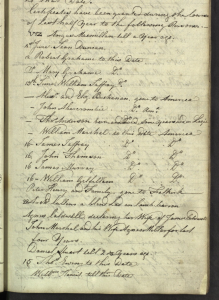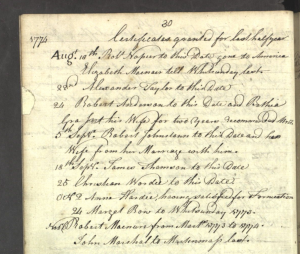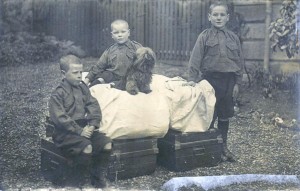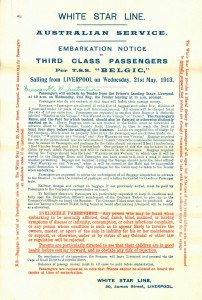Emigration from Scotland boomed in the 19th Century with an estimated 2 million Scots leaving the country between 1821 and 1915. For many researching their family history, emigration can prove to be a tricky area of research. There are often several stumbling blocks when trying to confirm if a relative did emigrate to a particular country.
An example of this can be seen in passenger lists. Passenger lists were usually created by shipping companies to identify boarding passengers. Unfortunately very few passenger lists survive in Scotland. Those that do survive were often left in the country the ship was travelling to. This information is becoming available online and the links below should help you get started with specific countries.
- Canada: http://www.bac-lac.gc.ca/eng/discover/immigration/immigration-records/passenger-lists/passenger-lists-1865-1922/Pages/introduction.aspx#b
- America -Ellis Island: http://libertyellisfoundation.org/passenger
- America – National Archives: http://www.archives.gov/nyc/finding-aids/passenger-lists.html
- Australia: http://www.naa.gov.au/collection/explore/migration/passengers.aspx
Recorded accounts of emigration from Scotland in 18th Century can be rare. The St Ninians Kirk Session minute book from 1773-1794, however, offers a unique insight into those who travelled from the parish to America.
From June to November 1774, the St Ninians Kirk Session recorded individuals who had been granted certificates by the Church to travel to America. This process was not unusual. If a communicant was known to be leaving the district for a year or more they were advised to apply for a certificate from the church. This would entitle them to join the membership of their new congregation and was an indication of their good behaviour.
The first entry itself is fairly simple. It is reads:
“– Alex[ande]r and Eliz[abeth] Buchanan, gone to America”
There is no indication of why, or where, the Buchanan’s were travelling to in America. Moreover, this is same for all the individuals listed. So why was a decision made to leave St Ninians and go to America? Unfortunately this is unknown but one possibility was to look for work.
Job shortages in 18th Century Scotland led to the arrival of many Scots in North America. Some were middle class professionals including doctors, farmers and merchants. Others were rural workers who had been offered a chance of labour abroad.
Whilst emigrants in 18th and 19th Century often decided to move to start a new life, others had no choice. The records of the Whinwell Childrens Home in Stirling detail the circumstances of which many children found themselves moving abroad. Those with no fixed abode or guardian were sent unaccompanied to Canada, Australia and British colonies to start a new life. Child migration was offered as a process of managing the large numbers of undisciplined, neglected, orphaned and unsocialised children.
An example can be seen in Robert Dickson. Robert, born in 1903, had been staying at the Dalziel poorhouse when his mother decided to give him up to the Whinwell Childrens Home. Specific societies, such as The Child Emigration Society, were dedicated solely to child migration and helped with Robert’s move to Australia. After being declared fit and healthy he would board the ‘S.S. Belgic’ at Liverpool on the 21st May 1913 aged 10.
Robert arrived in Australia on 3rd July 1913 along with 22 other boys in Freemantle, Australia. He went on to travel to Fairbridge Farm School in Pinjarra, where he would be schooled and trained in agricultural practices.



